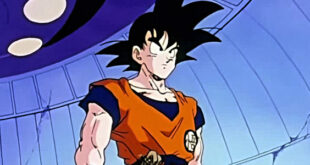Ask any random person who their favorite Disney character is and chances are it is Mickey Mouse. I, however, have always enjoyed Donald Duck more than Mickey because I empathized more with Donald. I saw his emotional and irrational behavior as misunderstood rather than childish or immature. I saw his quick temper and impulsive actions as part of his passionate personality rather than any sort of deeper problem that would require therapy.
To me, you could always trust Donald because he never had to think about things; instead he always acted on impulse because he trusted in himself that much more than most people could ever trust in themselves. That said, I’m so glad to be seeing the third volume of The Chronological Donald (1947-1950) on Wave VII of the Walt Disney Treasures DVD series.
One of the things that set Donald’s series of cartoons apart were the recurring characters that continually bothered and harassed the duck. My favorites were those two pesky chipmunks, and the shorts “Chip An’ Dale” and “Toy Tinkers” show Donald at his most irritable when confronted by his furry adversaries. It also shows that Donald doesn’t usually deserve much of the aggravation that comes his way. In the former, Donald was cold and needed some wood for the fire. How would he know that he stole the chipmunks’ food supply?
I see Donald as the everyday person’s character because there are some instances where he is completely normal, but finds himself in those situations that would drive anyone insane. He’s so nervous before his date with Daisy that he sleepwalks his future date, much to Daisy’s anguish because she has to spend the night protecting Donald from himself (“Sleepy Time Donald”); he, along with pal Goofy, are trapped in the desert without food or supplies (“Crazy With The Heat”); he tries to play around with a bee (and who hasn’t torn wings off moths or stomped on ants?) but karma stings him in the butt (“Inferior Decorator”); he’s incredibly excited about the World Series and just wants to listen to the radio broadcast (“Slide, Donald, Slide”); and he’s excited about seeing his girl (“Crazy Over Daisy”).
Donald can be a good guy as well. He adopts a baby kangaroo in “Daddy Duck,” he tries to cook dinner for his annoying nephews in “Soup’s On,” and he tries to survive a shipwreck with his insect friend in “Sea Salts.”
This DVD set makes more obvious than did previous Treasure collections the huge differences between what past animators got away with storytelling-wise and what current animators are restricted from doing. This doesn’t just apply to 1940s cartoons either. Watching old Chip N’ Dale or TaleSpin cartoons from the early '90s can give you an idea of how recent these politically correct changes have been implemented.
A few of the politically incorrect ideas were the characters that were based on racial stereotypes or even the nonchalant nature of guns and the unhesitant use of violence. A few notable episodes that are singled out for these reasons are “Clown of the Jungle” where Donald tries to take a relaxing vacation in the jungle (imagery of suicide), “Three For Breakfast” where Chip and Dale steal Donald’s pancakes (an Asian stereotype is used, plus Donald cooking the two chipmunks in a toaster), “Tea For Two Hundred” where Donald tries to bully a colony of ants (the ants represent either African tribes or Native Americans), “Donald’s Happy Birthday” where Donald’s nephews try to get their money from the bank that Donald holds (smoking), and “Beet At The Beach” where Donald is taught a lesson by his bee friend (to tell you the truth I don’t see a big problem in this one).
For the most part, I deplore censorship. While I do sympathize with parents who don’t want their kids learning such ideas from cartoons, I don’t sympathize with parents who immediately take offense with anything they deem unsuitable without 1) watching it themselves, 2) watching it with their kids, and 3) thinking that television is a bigger influence on their kids than they are (or should be). The kids who watched these old cartoons turned into your parents and grandparents, and logically you could only object to these cartoons nowadays if you thought they didn’t turn out so well.
Included on the two-disc DVD is the featurette “The Many Faces of Donald Duck” about how and why Donald Duck was and still is Disney’s biggest character. Walt Disney himself once said Donald was “the Gable of our stable.” I had no idea that Donald actually appeared in more feature films than Mickey. Also in the featurette is Leonard Maltin interviewing animator and current voice of Donald, Tony Anselmo.
Another featurette is “Sculpting Donald” in which Leonard Maltin interviews sculptor Ruben Procopio about the process of making the 2-D Donald into a 3-D Donald. Ruben is very comprehensive and informative on the different methods he uses to capture the many dimensions of a real duck within the many facets of Donald.
This is a great comprehensive look at another stage in Donald’s life, featuring many cartoons of the famous duck with his most hated nemeses. You can watch Donald get himself into the most ridiculous situations, while also seeing him enter and exit the mouths of many dangerous animals and continuing to make many, many people laugh.
 Blogcritics The critical lens on today's culture & entertainment
Blogcritics The critical lens on today's culture & entertainment



